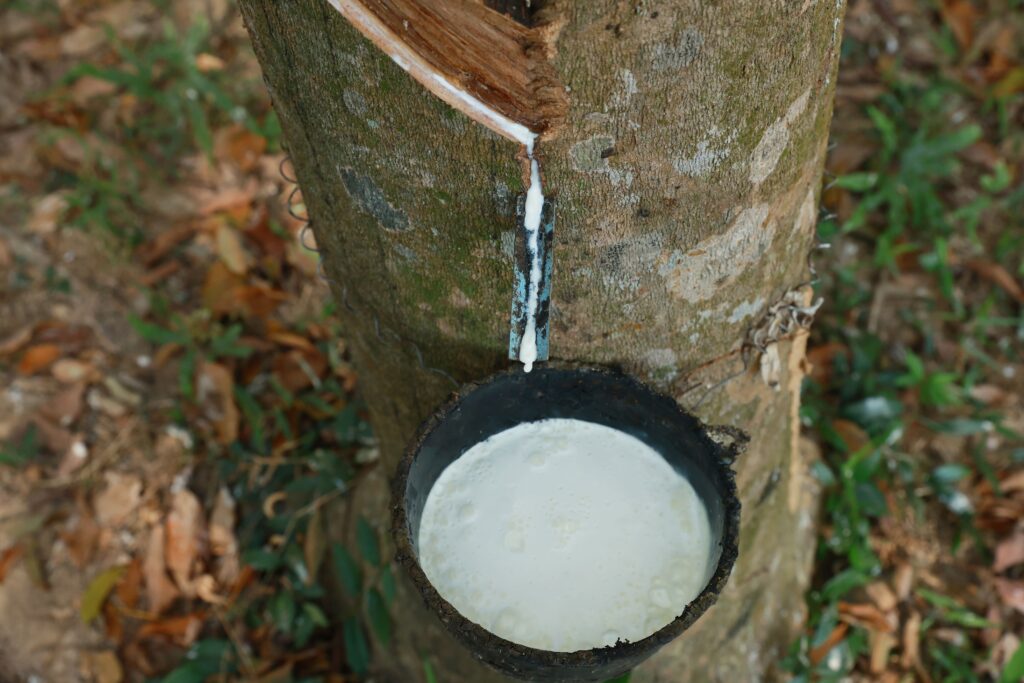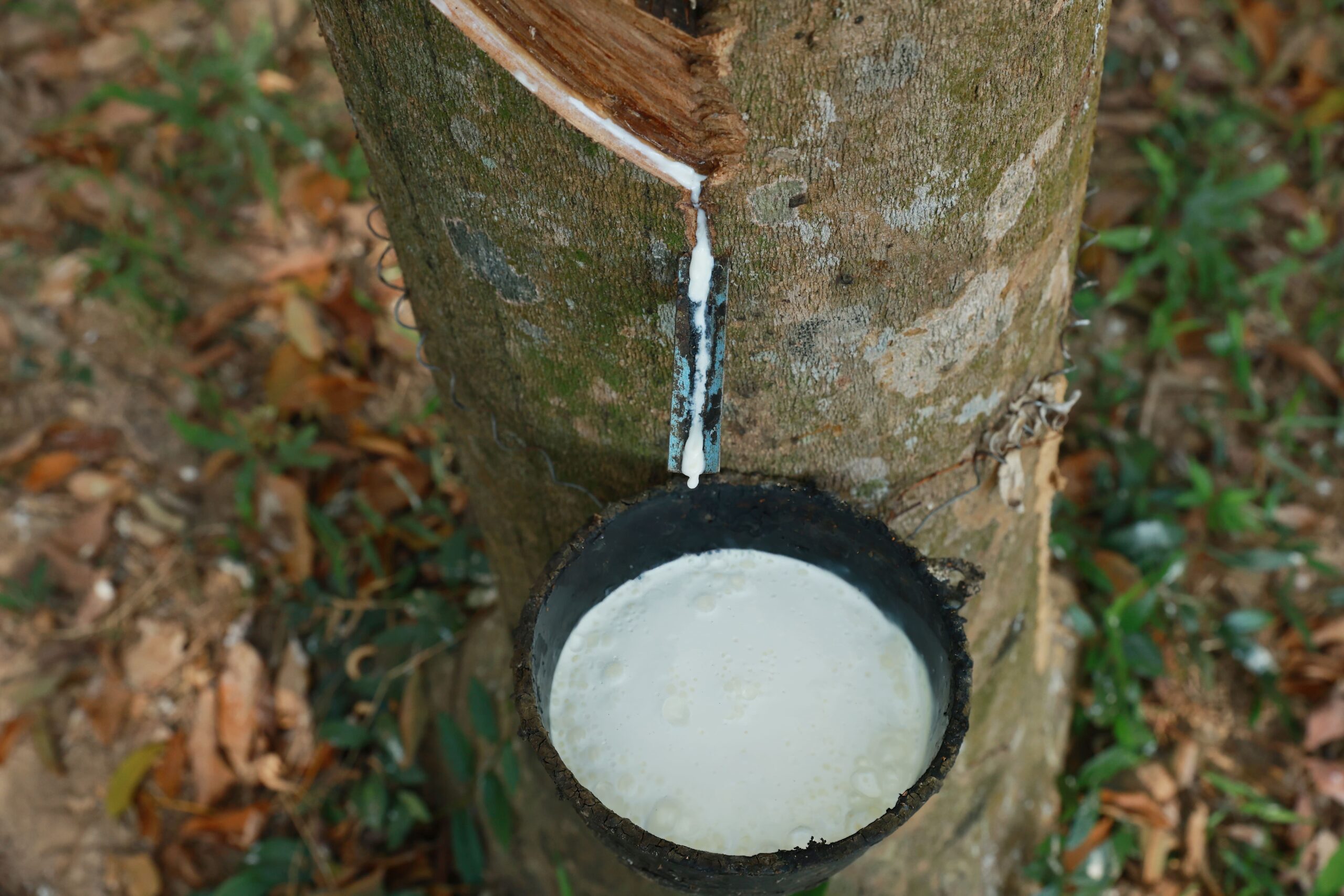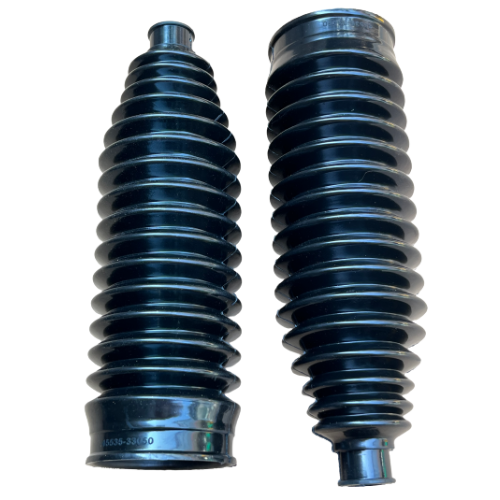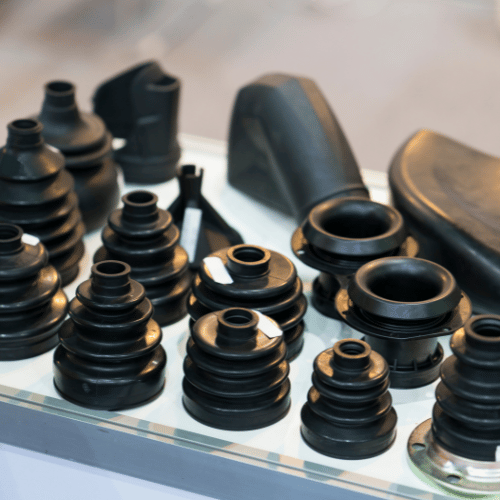Натуральный каучук против синтетического каучука в автомобильных резиновых деталях
Introduction to Automotive Rubber Components
Rubber plays a pivotal role in the automotive industry, serving as a crucial material in numerous applications ranging from tires to seals. Its unique properties, such as flexibility, durability, and resistance to wear and tear, make it a favored choice for manufacturers aiming to enhance vehicle performance and longevity. In the automotive sector, rubber materials can primarily be categorized into two types: natural rubber and synthetic alternatives. Understanding the distinctions between these two categories is essential for recognizing their specific applications and benefits.
Natural rubber, derived from the latex of rubber trees, provides exceptional resilience and elasticity. It is particularly valued for its outstanding tensile strength, making it ideal for components that require significant flexing without losing structural integrity. This type of rubber is often utilized in tires, where grip and flexibility are paramount for road performance. However, natural rubber can be sensitive to environmental factors, such as heat and ozone, necessitating careful consideration in its application.
On the other hand, synthetic rubber is manufactured through the polymerization of various chemical compounds, resulting in materials tailored for specific requirements. Commonly used synthetic rubbers include styrene-butadiene rubber (SBR) and ethylene propylene diene monomer (EPDM). These alternatives can be engineered to exhibit enhanced resistance to temperature fluctuations, chemicals, and aging, positioning them as suitable candidates for diverse automotive applications. For instance, SBR is frequently used in tire manufacturing due to its excellent wear resistance, while EPDM is often found in weather seals and hoses.
This guide aims to delve deeper into the characteristics of both natural and synthetic rubber materials used in automotive applications. By exploring their unique properties and potential uses, readers will gain comprehensive insights necessary for making informed decisions regarding automotive rubber components.
Natural Rubber: Characteristics and Applications
Natural rubber, derived from the sap of the rubber tree (Hevea brasiliensis), is a unique polymer composed primarily of polyisoprene. This organic compound imparts distinct characteristics to natural rubber, making it a favorable material in various applications, including automotive parts. The molecular structure of natural rubber allows it to display exceptional elasticity, resilience, and tensile strength, which are crucial properties in the manufacturing of components subjected to continuous stress and deformation.
One of the primary advantages of natural rubber is its remarkable elasticity, enabling it to stretch significantly without permanent deformation. This property is particularly beneficial in applications like tires, where the rubber must endure constant flexing and compression while maintaining structural integrity. In addition to its elasticity, natural rubber is also highly resilient, meaning it can return to its original shape after deformation, a vital characteristic for components such as seals and gaskets that require a perfect fit to prevent leaks.
The tensile strength of natural rubber is another noteworthy feature, allowing it to withstand significant forces without breaking. This durability contributes to the longevity and performance of automotive parts. Common applications of natural rubber in the automotive industry include tires, hoses, belts, and various sealing solutions. For instance, tire manufacturers often blend natural rubber with synthetic materials to enhance performance characteristics while taking advantage of the superior properties of natural rubber.
Furthermore, natural rubber exhibits excellent abrasion resistance, making it an ideal choice for components that come into contact with rough surfaces. The ability to maintain performance in diverse environmental conditions further underscores its suitability in automotive applications. Overall, the characteristics of natural rubber position it as an essential material in the production of reliable and efficient automotive components.


Buna-N (Nitrile Rubber): Properties and Uses
Buna-N, commonly known as Nitrile Rubber (NBR), is a synthetic rubber that is primarily composed of acrylonitrile and butadiene. Its creation stems from the need for a material that can withstand the rigorous demands of various industrial applications, particularly within the automotive sector. One of the standout properties of Buna-N is its exceptional resistance to oil, making it an ideal choice for automotive sealing applications where exposure to lubricants and fuels is inevitable.
In addition to its oil resistance, Buna-N boasts impressive temperature tolerance, typically functioning effectively in a temperature range from -40°F to 250°F (-40°C to 120°C). This attribute allows NBR components to maintain their integrity under the harsh temperature conditions often encountered in automotive engines and other machinery. Furthermore, Buna-N exhibits good resilience, tensile strength, and dimensional stability, all of which contribute to its usage in the manufacturing of various automotive seals, gaskets, and hoses.
When compared to other rubber types, Buna-N offers a range of advantages. For instance, its superior oil resistance surpasses that of many other elastomers, making it particularly beneficial in environments where exposure to hydrocarbons is frequent. However, it does have some disadvantages; Buna-N has a limited resistance to heat and sunlight aging compared to other synthetic rubbers like EPDM. Its performance may also decline when exposed to certain chemicals, such as strong oxidizing agents.
Overall, Buna-N serves an integral role in the automotive industry, providing reliable performance across diverse applications. Understanding its properties and uses helps manufacturers choose the right materials for their specific requirements, ensuring longevity and efficiency in automotive components.

FKM (Fluoroelastomer): Advantages in Automotive Applications
FKM, or fluoroelastomer, is a type of synthetic rubber known for its exceptional resistance to both heat and chemicals, making it a preferred choice within the automotive industry. With its unique molecular structure, FKM exhibits remarkable thermal stability, allowing it to maintain its integrity and functionality in extreme temperatures. This property is crucial for various automotive applications, particularly where exposure to fuels, oils, and solvents is common.
One of the significant advantages of FKM is its performance under high temperatures, often exceeding 200 degrees Celsius (392 degrees Fahrenheit). This high-temperature tolerance enables FKM to be utilized in various automotive components, ensuring reliability and durability. Automotive fuel systems are prime candidates for FKM usage, as these systems are exposed to volatile organic compounds and elevated temperatures, which can deteriorate lesser materials over time. Gaskets, O-rings, and seals made from FKM provide optimal sealing solutions that withstand these challenging environments.
When compared to other rubber variants, such as Buna-N, FKM stands out due to its superior chemical resistance. While Buna-N, or nitrile rubber, also offers good resistance to petroleum products, it tends to degrade faster when subjected to high temperatures or aggressive chemicals. This performance gap highlights FKM’s suitability for demanding automotive applications. In addition to fuel systems, FKM is also extensively employed in brake systems, transmission seals, and other critical components where performance and safety are paramount.
In conclusion, FKM’s unique properties make it a vital material within the automotive sector. Its exceptional chemical resistance and high-temperature tolerance position it as a superior choice for automotive applications, ensuring that critical components function reliably under tough conditions. The transition towards FKM in manufacturing automotive parts not only enhances performance but also contributes to the overall longevity and safety of vehicles.
Silicone Rubber: Unique Properties and Application Areas
Silicone rubber is a highly versatile material known for its remarkable properties, making it ideal for various applications within the automotive sector. One key advantage of silicone rubber is its exceptional temperature stability. It can operate effectively in a wide temperature range, typically from -60°C to 200°C (-76°F to 392°F), and in some specialized formulations, even higher temperatures. This resilience to extreme conditions allows silicone rubber to maintain its performance characteristics, making it an excellent choice for seals and gaskets in engines and other critical components.
Moreover, silicone rubber exhibits excellent flexibility and elasticity, which are crucial attributes for components that undergo repeated flexing and stretching during operation. This high level of flexibility contributes to its ability to form tight seals, which is essential in preventing leaks of fluids, gases, and other substances. The surface properties of silicone rubber also enhance its chemical resistance, allowing it to withstand exposure to a wide range of automotive fluids, including oils, fuels, and coolants.
Common applications of silicone rubber in the automotive industry include hoses, gaskets, seals, and electrical insulation. For instance, silicone hoses are extensively used in coolant and air intake systems, where their heat resistance and flexibility can endure the dynamic conditions of the engine environment. Gaskets made from silicone rubber provide reliable sealing in various engine components, ensuring optimal performance and longevity. Additionally, its use in electrical applications—such as insulators and sheathing—helps protect sensitive components from extreme temperatures and potential chemical degradation.
However, it is important to consider the limitations of silicone rubber. While it performs excellently in high-temperature environments, it may not be suitable for certain high-stress mechanical applications. Furthermore, its cost can be higher than that of conventional rubber materials, which may deter its use in some applications. Understanding these factors is essential for making informed decisions regarding the utilization of silicone rubber in automotive parts.

Neoprene (CR): Versatile and Resilient
Neoprene, commonly referred to as polychloroprene, is a synthetic rubber known for its remarkable versatility and resilience. This material exhibits a unique combination of physical and chemical properties that make it suitable for a wide array of automotive applications. One of its most notable characteristics is its excellent weather resistance, which is crucial in automotive environments where exposure to various weather conditions is inevitable. Unlike natural rubber, neoprene maintains its integrity under extreme temperatures and fluctuating climatic conditions, ensuring consistent performance over time.
Durability is another significant advantage of neoprene rubber. It is resistant to degradation from environmental factors such as ozone, UV light, and moisture, which often compromise the lifespan of other materials. This durability makes neoprene a preferred choice for automotive components that frequently encounter stress and wear, particularly over extended periods. Automotive manufacturers utilize neoprene extensively in the production of sleeves, belts, gaskets, and seals, where robust material performance is essential. In addition to its mechanical properties, neoprene is also chemically resistant, further broadening its applicability in diverse automotive contexts.
When compared to natural rubber and other synthetic alternatives, neoprene stands out due to its balanced properties. Natural rubber offers superior elasticity but falls short when it comes to weather resistance and chemical stability. Conversely, other synthetic rubbers may excel in specific applications but do not possess the comprehensive performance profile offered by neoprene. As such, automotive engineers often lean towards neoprene for parts that demand both flexibility and durability, making it an integral component in the automotive sector. Its adaptability alongside robust mechanical properties ensures that neoprene remains a leading choice for various automotive applications.
EPDM Rubber: Properties Tailored for Automotive Needs
EPDM (Ethylene Propylene Diene Monomer) rubber is an essential material in the automotive industry, recognized for its impressive array of properties that cater specifically to automotive needs. Its molecular structure grants it extraordinary resistance to heat, oxidation, and aging, which are vital attributes for components exposed to the challenges of automotive environments. Unlike many other synthetic rubbers, EPDM retains its flexibility and durability over a wide temperature range, making it particularly suited for automotive applications where thermal stability is required.
The versatility of EPDM rubber allows it to be employed in various automotive parts, most notably in weather sealing components such as window seals, door seals, and trunk seals. These applications benefit from EPDM’s excellent performance as a barrier against moisture, dust, and noise, ultimately enhancing vehicle comfort and integrity. Furthermore, EPDM exhibits remarkable electrical insulation properties, which is critical in an era where vehicles increasingly feature advanced electrical systems and hybrid technologies. This characteristic enables EPDM to be used in gaskets, connectors, and wiring harness insulation, thereby ensuring optimal functionality and safety in electrical applications.
Moreover, EPDM rubber is resistant to a diverse range of chemicals, including acids and alkalis, which contributes to its longevity when exposed to automotive fluids. This inherent chemical resistance, coupled with its weatherability, positions EPDM as a reliable choice for parts subjected to environmental stresses, such as those found in outdoor applications. In conclusion, the unique properties of EPDM rubber not only satisfy the demanding requirements of the automotive industry but also support ongoing innovations in vehicle design and functionality. Its combination of resilience, flexibility, and chemical resistance renders it indispensable in modern automotive engineering.
-576x1024.jpg)
SBR Rubber: Cost-Effective and Functional
Styrene-Butadiene Rubber (SBR) is a synthetic rubber that has become a common choice in the automotive industry due to its cost-effectiveness and satisfactory performance. This material is composed of styrene and butadiene, which provide a blend of desirable properties suitable for various applications. The economic benefits of SBR make it a preferred option for manufacturers looking to reduce production costs without significantly compromising performance.
SBR rubber is predominantly utilized in the production of tires, where its excellent abrasion resistance and aging stability play a crucial role in enhancing tire durability. The capacity to withstand varying temperatures and environmental conditions is another reason for its popularity. Moreover, SBR exhibits a good balance between tensile strength and elasticity, which contributes to the tire’s overall performance in terms of grip and handling. This characteristic thoroughly aligns with the automotive industry’s emphasis on safety and reliability.
Comparatively, while SBR offers a cost-effective solution, it often stands in contrast to higher-end elastomers such as natural rubber or specialized synthetic options like EPDM and NBR. These premium alternatives may exhibit superior resilience, lower temperature susceptibility, and enhanced chemical resistance, yet they also come with a higher price tag. Thus, SBR serves as a practical mid-point, providing reasonable performance for applications where extreme conditions are not a primary concern.
In addition to its application in tires, SBR is also effectively used in various automotive components such as seals, gaskets, and hoses. Its versatility enables manufacturers to adopt SBR across multiple parts of a vehicle, thus standardizing production processes and materials. This flexibility, along with its cost efficiency, further solidifies SBR’s position as a vital material in today’s automotive manufacturing landscape.
Comparative Table of Rubber Types in Automotive Applications
Understanding the various types of rubber utilized in automotive applications is crucial for making informed decisions in material selection. Below is a comparative table that presents key performance indicators for both natural rubber and its synthetic counterparts. The assessment is based on critical factors, including temperature range, tensile strength, elongation at break, rebound resilience, tear strength, and abrasion resistance.
| Rubber Type | Temperature Range (°C) | Tensile Strength (MPa) | Elongation at Break (%) | Rebound Resilience (%) | Tear Strength (kN/m) | Abrasion Resistance (mm³) |
|---|---|---|---|---|---|---|
| Natural Rubber | -50 to 90 | 25-30 | 400-800 | 50-60 | 20-25 | 80-100 |
| SBR (Styrene-Butadiene Rubber) | -40 to 80 | 20-30 | 300-500 | 40-45 | 15-20 | 40-60 |
| EPDM (Ethylene Propylene Diene Monomer) | -50 to 120 | 10-20 | 200-350 | 30-40 | 10-15 | 70-90 |
| Nitrile Rubber (NBR) | -30 to 100 | 15-25 | 300-500 | 40-55 | 12-18 | 55-75 |
| Silicone Rubber | -60 to 250 | 10-20 | 200-600 | 60-70 | 8-12 | 90-110 |
This table serves as an effective reference for comparing natural rubber with synthetic alternatives in automotive applications. Each rubber type exhibits unique characteristics that suit specific automotive needs, thereby guiding manufacturers and engineers in choosing the right material based on performance metrics. Through this comparative analysis, stakeholders can better navigate the complexities of rubber selection in the automotive sector.
Conclusion: Choosing the Right Rubber for Automotive Parts
In the automotive industry, the choice between natural rubber and its synthetic counterparts is pivotal in ensuring optimal performance and durability of automotive components. Natural rubber is renowned for its excellent elasticity and tensile strength, making it an ideal choice for applications like suspension components, tires, and hoses. It also exhibits superior wear resistance, which is crucial for parts subject to frequent motion and friction.
On the other hand, synthetic rubbers, such as neoprene and silicone, offer enhanced resistance to temperature fluctuations, oil, and other chemical exposures. These properties make synthetic alternatives suitable for a variety of automotive applications, particularly in environments where natural rubber may deteriorate quickly. For instance, synthetic rubber is often preferred for gaskets, seals, and fuel hoses, where resilience to harsh conditions is necessary.
When selecting the appropriate rubber material for automotive parts, it is important to consider several factors. First, performance requirements should be clearly defined based on the specific application and environmental conditions. For example, components exposed to extreme temperatures or chemicals will likely benefit from synthetic rubber’s advanced properties. Additionally, assessing the cost implications is essential, as natural rubber can often be more economical, yet may not provide the desired durability in certain high-stress applications.
Ultimately, the choice of rubber material should balance cost, performance expectations, and application requirements. Understanding the distinct characteristics of natural and synthetic rubbers ensures that automotive parts are optimized for longevity and efficiency. By making an informed selection, manufacturers can enhance vehicle reliability and performance, leading to higher customer satisfaction and reduced maintenance costs.
Rubberautoparts Tech

Сырье для резиновых автозапчастей
Введение в резиновые автодетали Резиновые автодетали являются неотъемлемыми компонентами в автомобильной промышленности, играя важную роль в повышении производительности и долговечности.

Что такое пыльник рулевой рейки и как его заменить: полное руководство
Система рулевого управления вашего автомобиля зависит от нескольких важных компонентов, работающих в гармонии, и часто упускаемая из виду часть — это пыльник рулевой рейки. Этот гибкий резиновый или термопластиковый

Таблица общих резиновых деталей в автомобилях и синонимов
Обычные резиновые компоненты в автомобилях Резиновые компоненты играют важную роль в функциональности и долговечности автомобилей. Мы предлагаем широкий ассортимент автомобильной резины